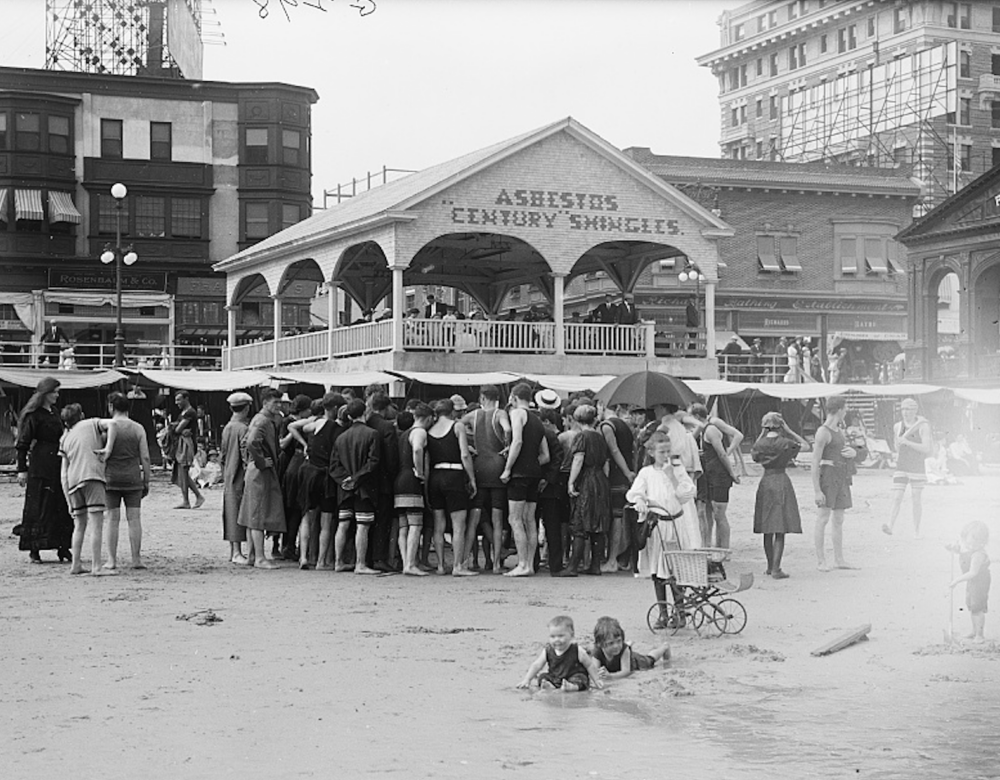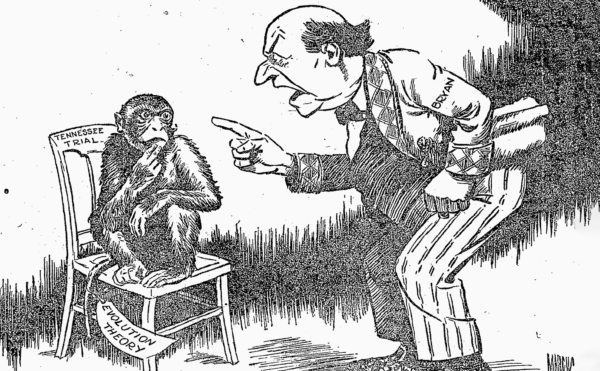Asbestos was once considered a miracle substance—a wonder of the modern age, due in large part to its role in stopping the fires that once plagued every major city. Unfortunately, it also destroys people’s lungs. This story examines asbestos’s fall from grace through the stories of one of the very first factory workers who died from its complications and the crusading doctor who would not rest until asbestos was banned.
About The Disappearing Spoon
Hosted by New York Times best-selling author Sam Kean, The Disappearing Spoon tells little-known stories from our scientific past—from the shocking way the smallpox vaccine was transported around the world to why we don’t have a birth control pill for men. These topsy-turvy science tales, some of which have never made it into history books, are surprisingly powerful and insightful.
Credits
Host: Sam Kean
Senior Producer: Mariel Carr
Producer: Rigoberto Hernandez
Associate Producer: Sarah Kaplan
Audio Engineer: Rowhome Productions
Transcript
If you were asked to name a “wonder material,” what would you say? Silicon? Plastics? Graphene? All good choices. But for people in the mid–1900s, the choice would have been clear—asbestos.
That might seem like a shocking answer. Isn’t asbestos deadly? Yes. It causes terrible lung diseases. It’s every bit as bad as you’ve heard.
But that isn’t the full story. Asbestos probably saved far more lives than it cost, millions of them. And in a wider sense, it remade the entire world.
Asbestos isn’t just a historical relic, either. Odds are there’s asbestos in your home or office right now. As much as we’d like to, the world simply cannot forget asbestos.
Many people feel, however vaguely, that “natural” things are better and more wholesome than “artificial” things. Artificial things seem dangerous: they pollute the environment and poison us. But asbestos complicates that tidy division. Asbestos is both deadly and wholly natural. It comes right from Mother Nature, just like cotton and wood.
Asbestos is made of the same material as sand, silicon dioxide. It forms when silicon dioxide dissolves in hot water and precipitates out under high pressure. Microscopically, it’s made of very thin fibers, like cotton candy. A strand the thickness of a human hair contains two million fibers. A string a hundred yards long weighs less than an ounce.
We don’t know how people first discovered asbestos, but here’s one guess. Sometimes, after forest fires, the landscape will look scorched and black—except for lumps of asbestos sitting there, white and untouched. It’s completely impervious to fire.
Just like cotton, asbestos fibers can be woven into cloth. It has a silky sheen, and it feels slippery to touch. People have been weaving asbestos for 5000 years, mostly for applications that require heat resistance. The ancient Greeks wrapped bodies in asbestos on funeral pyres, to keep the person’s ashes separate from the fire’s ashes. Ancient Romans made lamps for vestal virgins with asbestos wicks. As long as you kept the lamp supplied with oil, the wicks burned forever.
Aside from these uses, however, people mostly used asbestos as a party trick. For instance, Charlemagne had an asbestos tablecloth he spread for banquets. You can imagine how it looked after a night of revelry—smeared with boar grease, soaked with wine. But Charlemagne simply tossed it into a fire, and voilà. All the stains would burn away, while the cloth emerged pure and spotless, cleaner than ever.
People invented all sorts of stories to explain where asbestos came from. Some said it was made from the feathers of the phoenix, the mythical bird that arose from its own ashes. Others swore it came from the fur of so-called fire rats that lived inside volcanoes. In Jerusalem, merchants sold swatches of asbestos cloth to pilgrims, claiming they were scraps from the Holy Shroud that Jesus was buried in. The fact that it didn’t burn was proof of its miraculous nature.
Still, a few ancient historians did know where asbestos came from—mines. And those historians often mentioned the material in ominous terms. One ancient Greek writer advised never buying an enslaved person who’d worked in an asbestos mine. They always died within a few years.
Asbestos probably would have remained a mere curiosity if not for the Industrial Revolution. That revolution was powered largely by steam. Steam engines needed insulating jackets, and fireproof asbestos was the best insulator known.
The Industrial Revolution also drew millions of people into cities. Their new homes were slapdash structures made of wood, and they were jam-packed together. Given that people carried lanterns and cooked over open hearths, fires were inevitable. You’ve probably heard of the Great Chicago Fire. But in truth, every city had a great fire way back when, sometimes two or three.
The solution to these fires was asbestos. You could insulate buildings made of wood with it, or mix it into concrete to make it fire-resistant. There were also asbestos shingles, asbestos tiles, and asbestos paint to coat walls with.
More than any other country, the United States embraced asbestos—for homes, hotels, hospitals, schools, and more. The U.S. Capitol once gleamed with asbestos paint. Throughout the 1900s, the U.S. consumed 30 million tons of asbestos overall—60 billion pounds. And pretty much every building erected between 1900 and 1980, public or private, commercial or residential, used loads of asbestos. Not coincidentally, fire deaths dropped by 90 percent over that same time.
Before long, asbestos found its way into consumer goods. Some of these applications make sense: toasters, ironing boards, hair dryers. Others though leave you scratching your head a bit. Companies made fake, decorative Christmas snow from asbestos. Brewers strained beer through asbestos filters. Manufacturers made gutters and downspouts from it—products that don’t exactly seem like fire hazards. There was even asbestos-laced toothpaste.
In all, some 4,000 consumer goods contained asbestos. Saying that your product contained asbestos made it sound modern and high-tech. Asbestos equaled progress.
Asbestos even appeared in comic books. One superhero in the Fantastic Four universe was named the Human Torch. And one nemesis was the Asbestos Lady. She robbed banks and escaped by lighting fires that police crews couldn’t cross. But she could cross them in her asbestos bodysuit.
Despite all the hype, a few clear-eyed doctors noticed that asbestos seemed hazardous to people’s health. Sadly, the only people who paid attention were insurance executives. As early as 1918, insurance companies were denying coverage to workers in asbestos factories. They deemed them too risky.
One case in particular highlights the plight of these factory workers. Nellie Kershaw was born near Manchester, England, in 1891. She had warm eyes, thick brown hair, and plump cheeks.
At age 12, she dropped out of school and soon began working in an asbestos factory. There, she managed the machines that twisted thin strands of asbestos into thicker threads. Given the wrenching of the threads, the machines produced dust, which Kershaw inhaled day in and day out for two decades.
That dust consisted of thin, wavy microscopic fibers. Like wrinkled toothpicks. Kershaw’s nose and throat would have trapped most of those fibers. But some fibers slip through and burrow into lung tissue. When your body cannot clear them out, that causes inflammation and scarring. This in turn leaves the lung tissue stiff, which makes it hard to breathe. One doctor compared the damage to a spider “crisscrossing the lungs with a web of scar tissue, until the victim is slowly strangled.”
This damage finally caught up with Kershaw in 1920. A few years earlier, she’d married a tiler named Frank and had a daughter. But she never really recovered from the birth. She constantly felt tired and began coughing up blood. Over the next two years her lungs deteriorated until she essentially collapsed on the job. She retired to a sickbed at age 31, scarcely able to breathe—a torturous feeling of constant suffocation. She also suffered night sweats and rapidly lost weight, leaving her with sunken eyes and a skeletal frame.
Sadly, Kershaw eventually gave up seeing doctors, because it did no good. No one could help her. Her factory and its insurance company refused to compensate her. They said helping out workers would set a, quote, “dangerous” precedent. The British government eventually came through with a pittance—seven shillings per week, around $19 today. Kershaw died nearly destitute in 1924, age 33.
Kershaw underwent an autopsy. The coroner must have been startled at what he saw. The scarred lung tissue of asbestos victims often turns grey, or even blue-black, like a bruise. Coroners have even reported hearing their scalpel grate or rasp when they cut in. The tissue is that full of mineral grit.
When the coroner examined Kershaw’s lung tissue under a microscope, he found fibers that looked exactly like fibers from her factory. When confronted with this evidence, the factory owners promised—promised—that they’d shape up. From that day forward, they’d provide better working conditions, with masks and good ventilation. Of course, they did nothing of the sort. And those measures were too late anyway for the hundreds of people who’d already put in many years there. As a result, their workers continued to suffer and die.
Eventually, under pressure, the factory did pay £88,000 pounds to 140 workers between 1931 and 1948. That’s around £628 each, or $35,000 today. Meanwhile, shareholders in the firm profited to the tune of £7 million during that same time—close to $400 million today.
And yet, despite many, many cases like Kershaw’s, asbestos never became the public health scare you might expect. But why? Certainly you can blame the usual things—money, powerful special interests, cowardly politicians.
But that’s not the whole story. People also willingly looked away. So many of them had endured so many infernos—they’d seen their homes torched, their lives and loved ones burned to cinders—that they were willing to put up with the danger of asbestos. Compared to another city-gutting fire, some poor wheezing factory workers seemed like a small price to pay.
Only in the 1960s, when one man made it his crusade to eliminate asbestos, did anything change.
Irving Selikoff was born to a Russian family in New York City in 1915. He wanted to be a doctor, and was bright enough to attend Columbia University for undergrad. But American medical schools had quotas for Jews then, so he had to pursue his M.D. in Scotland instead.
After returning to New York, Selikoff specialized in chest ailments. His work on tuberculosis won him a Lasker Prize, a medical award second only to the Nobel Prize in prestige.
In the early 1960s, he opened a clinic in Paterson, New Jersey. The Asbestos Workers Union soon asked if it could start referring patients to him. He agreed, figuring it never hurt to pick up a few patients.
But it wasn’t just a few. And the poor health of these workers stunned him. Fourteen of his new patients had either a type of lung scarring called fibrosis, or else a rare lung cancer called mesothelioma. Both conditions were resistant to treatment, and all fourteen men died within a few years.
Disturbed, Selikoff began trying to get medical records from older patients, to see how long asbestos workers had been suffering. Factory owners refused to help him. So he somehow accessed an FBI list of asbestos workers with security clearances from World War II work. He traced patients that way. He also scoured medical journals for cases like Nellie Kershaw’s.
What he found shocked him. Dozens of reports linked asbestos to cancer and lung damage. But no one seemed to care. So Selikoff made it his life’s mission to raise the alarm about asbestos.
He began working 18-hour days. Colleagues dreaded his phone calls at dawn, demanding help. He published reports, and exchanged anguished letters with victims, documenting their suffering. He also wrote letters to everyone from Supreme Court justices to Mikhael Gorbachev, begging them to listen.
And slowly people did, because asbestos was scarily good at killing people. The fibers could even cross the mother’s and infect the fetus. One victim died of lung cancer after working with asbestos for just three months.
In some cases, even the relatives of people who worked at asbestos plants fell victim, due to dust they brought home on their clothes. One poor woman saw her husband die of cancer, and then watched her adult daughter—who’d been a mere child when the husband worked at an asbestos plant—die of the same cancer just three months later.
Selikoff’s tireless work between the 1960s and 1990s led to $70 billion in lawsuits, and in the public imagination, asbestos flipped from wonder material to deadly poison. Remember the comic book villain, Lady Asbestos, who robbed banks and started fires to evade the police? Asbestos even got her. In her final mention in the comic, she dies of mesothelioma at age 45.
Still, while Selikoff certainly deserves credit for sounding the alarm on asbestos, it’s possible that society would have continued to avert its eyes if we hadn’t made big strides in fighting fires: better water systems, alternative fire-suppression materials, things like that. Frankly, scorning asbestos is a luxury, and one we shouldn’t take for granted.
And we’re still dealing with the problem of asbestos today. The EPA estimates that 700,000 buildings in the United States alone still have asbestos inside, including up to 45,000 schools. Pretty much every building erected between 1900 and 1980, public or private, commercial or residential, probably contains some.
And while it might seem obvious that we should charge in and rip all that asbestos out, that’s actually a bad idea. Tearing asbestos out would create dust, and breathing in that dust would cause widespread lung damage. As a result, it’s usually safer to let this sleeping dragon lie. If there’s asbestos in your home or office, however scary that feels, if it’s left alone, it probably won’t hurt anyone.
Thanks to Selikoff, most industrialized nations have banned asbestos today. In the United States, you could still use it in the brake pads of cars, until that practice was banned in 2024. Still, the material has hardly disappeared. India and China still use it by the ton, and it still causes a quarter-million deaths per year worldwide.
Almost no material in history has undergone such a reversal in fortune as asbestos—from magical wonder material to cursed carcinogen. And in the end, it’s impossible to measure whether it did more good than harm. Think of Nellie Kershaw suffocating on her sickbed, her little daughter weeping. Then again, think of all the infernos averted because of it.
Charles Dickens famously opened A Tale of Two Cities by saying it was the best of times, it was the worst of times. The asbestos time was both.




